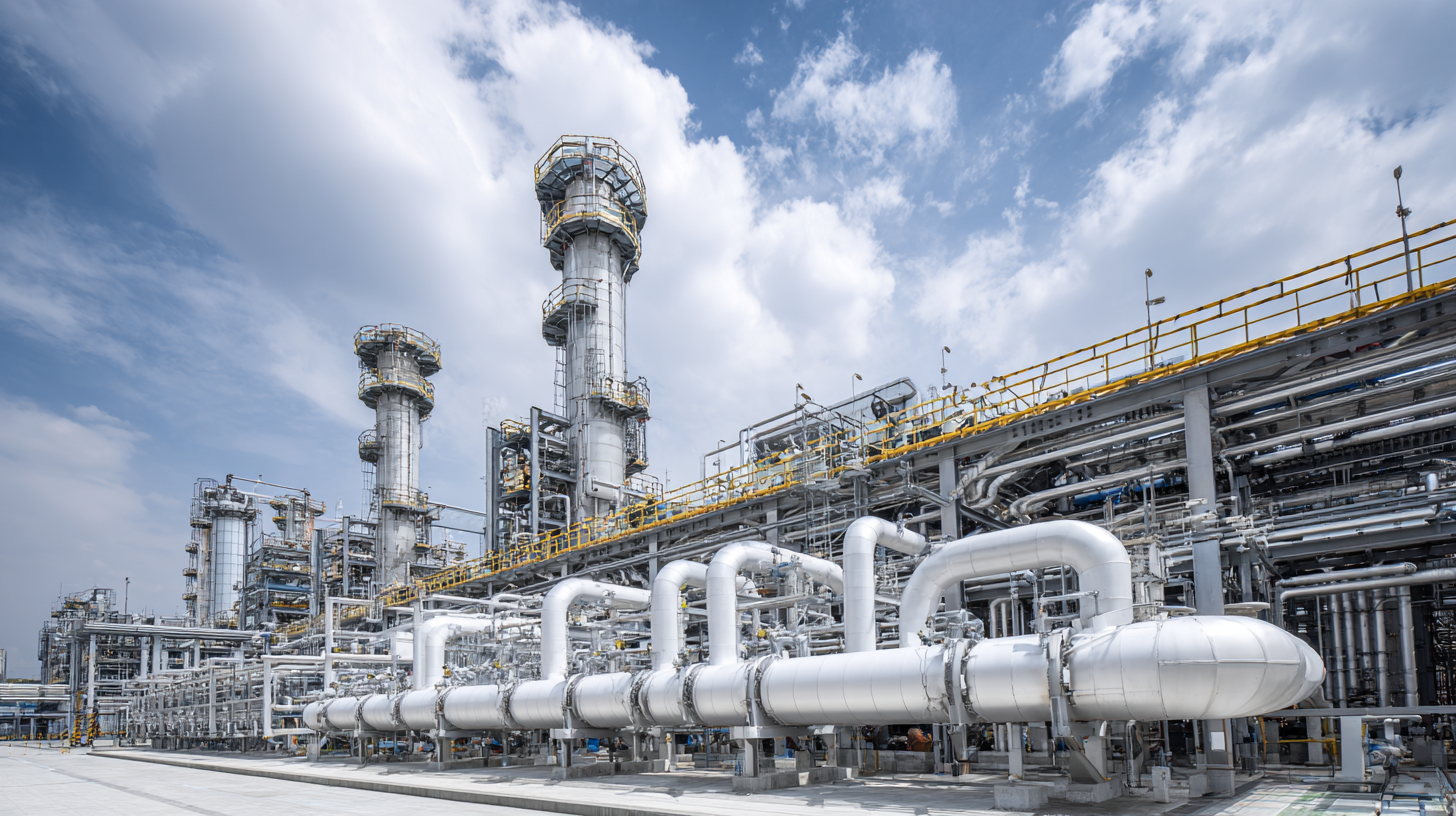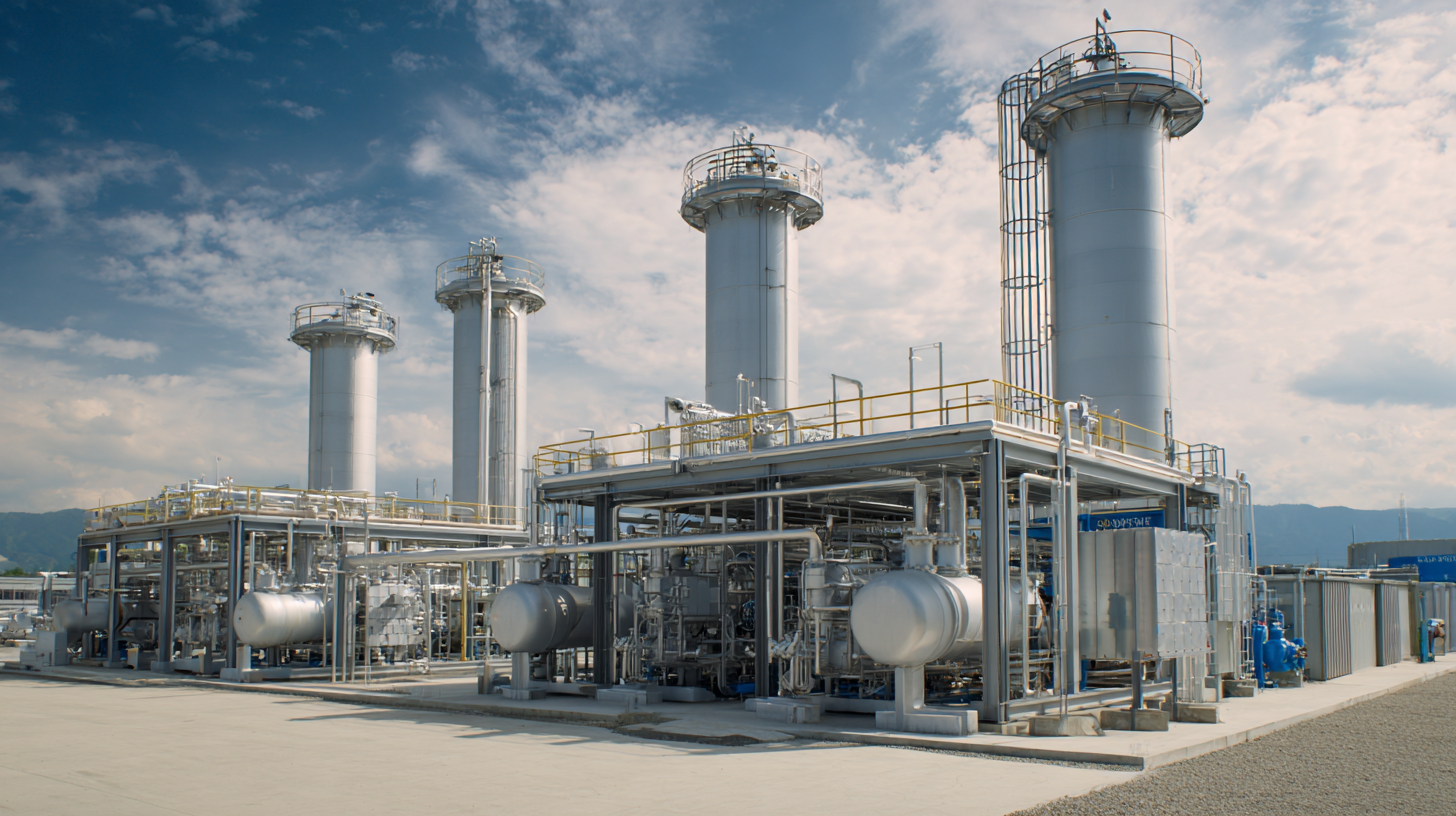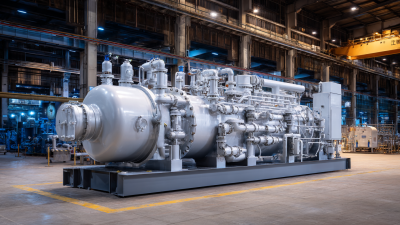
-
Home
-
About us
-
Products
-
Solutions
-
News
-
Blog
-
Contact us
Leave Your Message

In the quest for efficient resource management, the extraction of helium from boil-off gas has emerged as a critical area of focus. Boil-Off Gas Helium Extraction leverages the natural processes of helium evaporation and collection, providing an innovative solution to maximize the yield of this valuable gas. As the demand for helium continues to rise, driven by its applications in various industries such as healthcare, electronics, and aerospace, optimizing the methods of extraction becomes imperative. This guide will explore the most effective strategies and technologies for harvesting boil-off gas helium, enabling industry stakeholders to reduce waste, enhance recovery rates, and contribute to sustainable resource utilization. By understanding the principles and techniques behind this process, businesses can adapt to evolving market needs while ensuring the responsible management of helium resources.

In cryogenic systems, boil-off gas helium is primarily generated during the storage and handling of liquid helium. As helium is subject to phase change and thermal dynamics, any increase in temperature can cause some of the liquid helium to vaporize, leading to the release of helium gas. Key sources of this boil-off gas include insulation deficiencies, thermal leaks, and operational inefficiencies during transfer processes. Identifying and addressing these sources is critical for enhancing resource management and minimizing waste.
**Tip:** Regularly inspect and maintain insulation materials to ensure that they effectively minimize heat transfer. This not only helps in reducing boil-off gas but also improves the overall efficiency of cryogenic systems.
Another significant contributor to boil-off gas helium is improper management of storage conditions. For instance, fluctuations in ambient temperature or inadequate control of pressure can exacerbate the vaporization process. By tightly regulating these parameters, operators can significantly reduce the amount of helium lost to the atmosphere.
**Tip:** Implement automated monitoring systems that provide real-time data on temperature and pressure, allowing for prompt adjustments and ensuring optimal cryogenic conditions.
Efficiently harvesting boil-off gas helium is crucial for sustainable resource management, particularly in sectors utilizing cryogenic systems. One effective method for capturing this gas is utilizing specialized containment vessels that can withstand the extreme low temperatures. These vessels are designed to minimize heat transfer, thus preventing unnecessary evaporation of helium. Incorporating modular storage solutions allows for better scalability, making the process adaptable to different operational scales.
Tips: When selecting containment systems, prioritize those with superior insulation properties to enhance gas retention. Regular maintenance and inspections of these vessels can also prevent leaks and prolong the storage efficiency.
Another technique involves integrating advanced pressure control systems to redirect helium vapor back into the storage cycle. By maintaining optimal pressure conditions, you can significantly reduce the amount of helium that is lost during routine operations. Implementing automated systems for monitoring and managing these parameters can streamline the process and improve resource efficiency.
Tips: Utilize sensors and real-time data analytics to monitor helium levels and pressure, allowing for swift adjustments and reducing the likelihood of boil-off loss. Training personnel on these systems ensures that they can respond to fluctuations promptly.
| Technique | Description | Efficiency (%) | Cost (USD) | Storage Capacity (L) |
|---|---|---|---|---|
| Condensation | Utilizes cooling systems to condense helium gas back into liquid form. | 95 | 2000 | 150 |
| Cryogenic Capture | Collects helium gas at cryogenic temperatures using specialized systems. | 90 | 5000 | 200 |
| Adsorption | Uses adsorbent materials to capture helium gas from the atmosphere. | 85 | 1500 | 100 |
| Pneumatic Collection | Involves capturing gas through a network of pipes and valves. | 80 | 3000 | 250 |
| Vacuum Retrieval | Employs vacuum systems to extract helium from storage areas. | 75 | 4000 | 300 |
The optimization of recovery processes is pivotal for maximizing helium yield from boil-off gas. By employing innovative extraction techniques, similar to recent advancements in resource recovery from waste materials, we can enhance the efficiency of helium harvesting. For instance, methods like ohmic heating-assisted extraction not only make the recovery of valuable substances from food waste more efficient but also underline the importance of similar approaches in the helium extraction processes.
Additionally, leveraging strategies such as microwave-assisted pretreatment can play a significant role in enhancing the extraction yield. Just as these technologies have been successfully applied in the recovery of biofuels and oils from organic residues, similar methodologies can be adapted to target helium in boil-off gas.
The focus on sustainable and efficient approaches is crucial for not only increasing helium availability but also for promoting better resource management practices across various industries.
The economic benefits of effective helium harvesting are becoming increasingly prominent as resource management strategies evolve. With growing interest in lunar mining and the potential of helium-rich gas reserves, efficient harvesting methods can enhance financial returns while reducing environmental impacts. As entrepreneurial groups aim to capitalize on the moon's resources, the demand for helium—vital for various industries—continues to rise.

Tips for Efficient Helium Harvesting:
- Implement advanced extraction technologies that minimize waste during the harvesting process. Investing in state-of-the-art equipment can drastically reduce the cost per cubic meter of helium produced.
- Foster partnerships with scientific organizations to stay updated on research that can lead to more sustainable practices in helium extraction, ensuring long-term viability of gas reserves.
As industries worldwide take notice of the helium market's potential, effective management of this resource could lead to significant economic advancements. By innovating their extraction techniques and prioritizing efficient resource allocation, businesses can pave the way for a thriving helium economy in the near future.
 Efficient resource management in helium usage is crucial, particularly in the context of boil-off gas recovery. According to the American Institute of Physics, approximately 30% of helium is lost due to boil-off gas during storage and transportation, highlighting the need for robust strategies to harness this resource.
Efficient resource management in helium usage is crucial, particularly in the context of boil-off gas recovery. According to the American Institute of Physics, approximately 30% of helium is lost due to boil-off gas during storage and transportation, highlighting the need for robust strategies to harness this resource.
Implementing best practices can significantly mitigate these losses, enabling industries to maximize the utility of helium, which is not only a non-renewable resource but also vital for various applications, including medical imaging and aerospace technologies.
To effectively manage helium resources, one recommended practice is the installation of specialized boil-off gas recovery systems. These systems can capture and repurpose the helium that would otherwise escape into the atmosphere. A report from the U.S. Geological Survey (USGS) emphasizes that optimized recovery techniques can decrease reliance on new helium extraction, thereby reducing expenses by up to 20%. Additionally, regular maintenance and monitoring of storage units are essential in ensuring the integrity of containment systems and minimizing gas losses. By integrating data-driven methodologies and technology into resource management practices, the helium sector can regain a significant portion of this valuable gas and contribute to sustainable resource stewardship.





